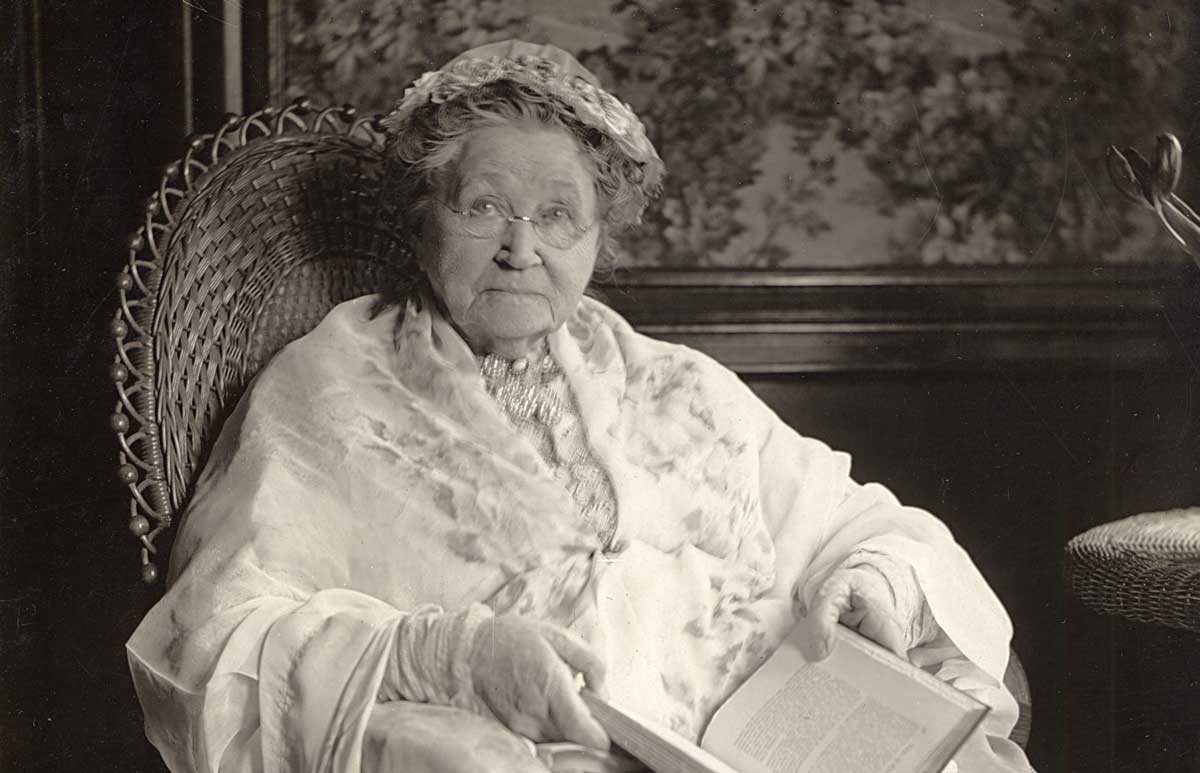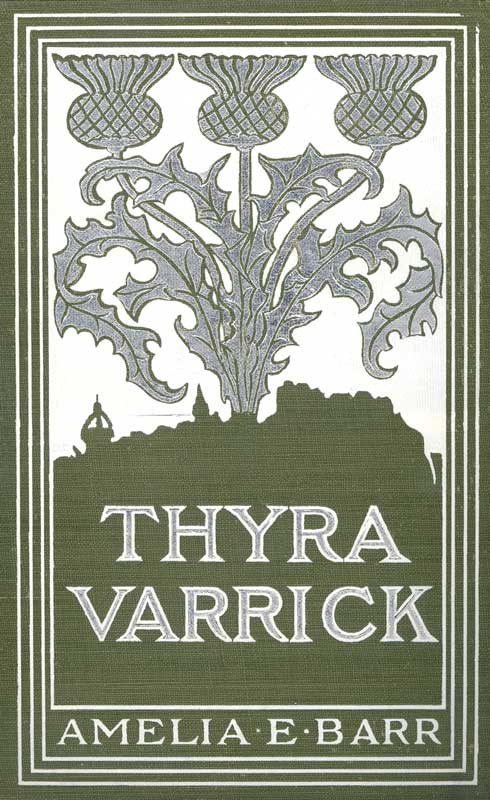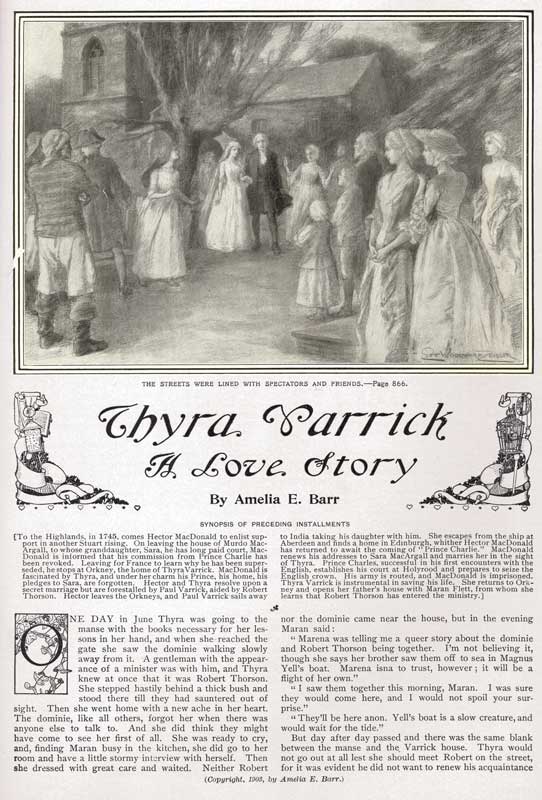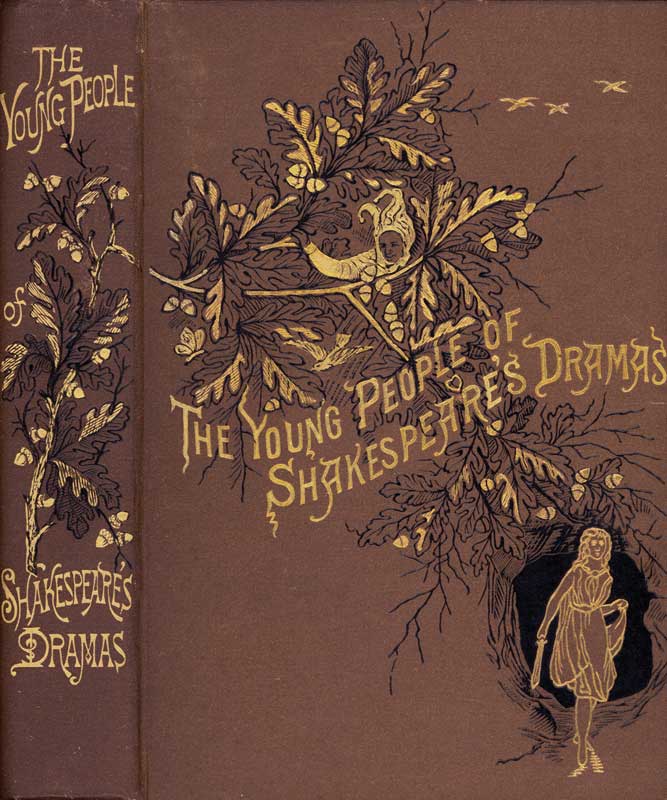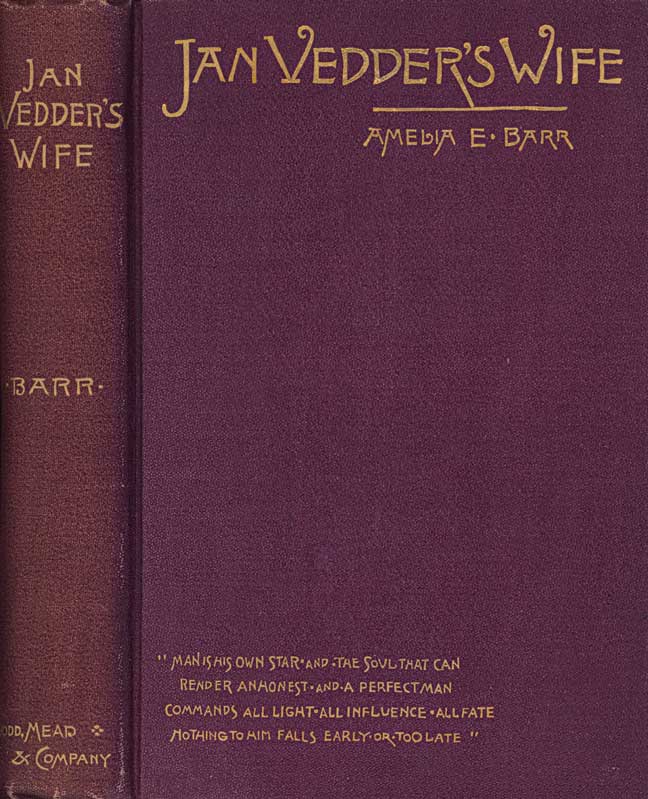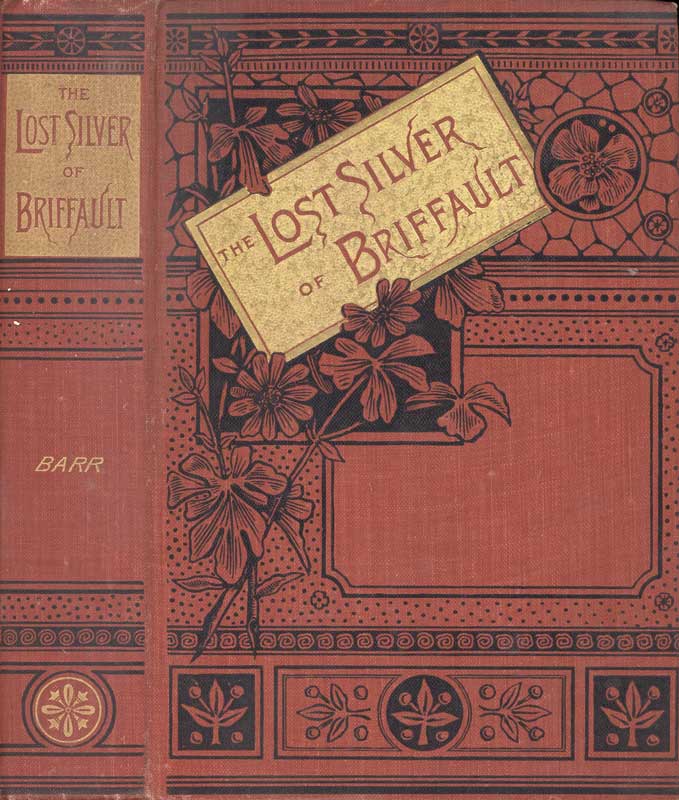Saved by the Cover
Rediscovering author Amelia E. Barr By Richard Minsky Richard Minsky is a book artist and the founder of the Center for Book Arts in New York City (1974).
While cataloguing and mounting six exhibitions of American publishers’ bindings, I noticed a few exceptional cover designs by important designers on novels by Amelia E. Barr, a writer I had never heard of. Searching for other titles by this mystery woman, I found seventy books by Barr issued between 1882 and 1919, some in several different editions, that provide a marvelous set of bindings representing the transition of cover art from Eastlake post-Victorian styling to Arts and Crafts, Japonisme, Art Nouveau, and Poster style. Taken as a whole, it reinforced the idea that formats change our perception of the texts. We can experience Barr’s novel Thyra Varrick, for example, in the original manuscript, or as a 1903 illustrated magazine serialization among advertisements for corsets and household supplies. The latter takes a romance set in eighteenth-century Scotland and, for us, places it in the material culture of turn-of-the-century America. We also can follow changes in text from the manuscript through the book version, which was illustrated by Lee Woodward Zeigler and published by J. F. Taylor in 1903. It was bound in decorative olive cloth stamped in white and silver thistle over a silhouette skyline.
Although she has fallen into obscurity, at the beginning of the twentieth century Barr (1831-1919) was one of the most popular female authors in America (she had emigrated from Great Britain). I found several contradictory accounts of her life, and to resolve those I started reading her autobiography, All the Days of My Life: The Red Leaves of a Human Heart (1913). It was riveting, a life-and-death action-adventure story of perseverance. Additionally, it was uniquely interesting from my viewpoint as a member of the Society for the History of Authorship, Reading, and Publishing (SHARP). She recounted anecdotes about her research methods, writing process, and the economics of the trade, as well as her relationships with editors, publishers, and readers.
It set me on a mission to organize an exhibition and issue a catalogue of books by this forgotten essayist and star of popular fiction. In 1890 she was one of the twenty top authors in America, with commensurate financial success. Although most of her writing did not didactically promote feminism, she called on women to be independent and smart in her magazine work, and she presented examples of how men treated women throughout history, cloaked in the seductive guise of thoroughly researched historical romance novels.
A lifelong Methodist, Barr incorporated her ethics into the novels, but also wrote heretical works, including a romance that involved reincarnation. Perhaps it was her moral philosophy that led to the decline of interest among readers in the roaring twenties.
Barr watched from her photo by my desk as I considered different libraries for placement of my collection of her works. She was thrilled when I told her that she would be rediscovered in the same institution that houses the Susan B. Anthony Institute for Gender, Sexuality, and Women’s Studies, and the Susan B. Anthony Center, which works to bring awareness to, and advocate for, social justice and equality. The entire exhibition was acquired by the University of Rochester River Campus Libraries in 2017. In announcing the acquisition, Jessica Lacher-Feldman, the Joseph N. Lambert and Harold B. Schleifer Director of Rare Books, Special Collections, and Preservation, wrote:
Barr’s books and her story connect with women’s suffrage, the history of readership, the Beechers, women and work, and more. The collection also complements our growing and important collection of nineteenth-century publishers’ bindings. Her career speaks to the strength and determination of a single woman to gain success, wealth, and fame through determination, hard work, and talent.
The collection of over 170 volumes has been cataloged, including important copy-specific information, and is available for researchers…. And as with all of the holdings in any rare book and special collections library, infinite opportunities for creative and scholarly works are within reach, from a short paper, to a doctoral dissertation, to a play or other artistic interpretation of this fascinating and steadfast teacher and author.
It is always exciting to pursue the chase of rare books, whatever the subject, but the great reward is in knowing that the books have found a permanent home in exactly the right place where they will be available to the people most interested in them.








